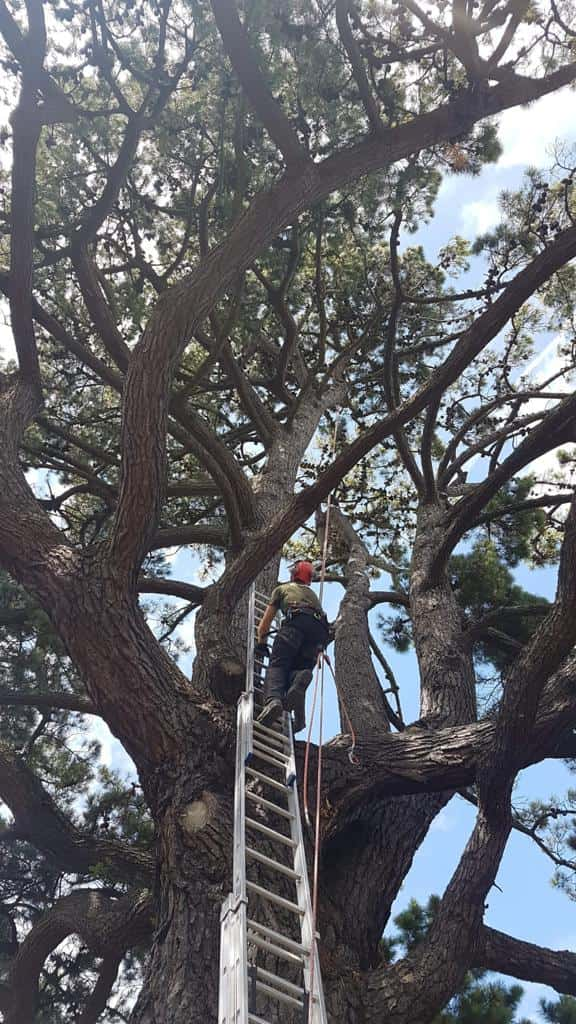The crown of a tree plays a crucial role in its overall health, stability, and long-term development. As the upper section containing leaves and branches, the crown is responsible for vital biological processes such as photosynthesis, nutrient distribution, and balance. When the crown becomes disproportionately large or develops unevenly, it can place stress on the tree and increase the risk of structural issues. For homeowners and landowners in Gloucester, Gloucestershire, understanding how crown size affects tree behaviour is essential. EM Tree Surgery Gloucester explains how managing crown size promotes healthier, safer, and more resilient trees.
Why Crown Size Matters
A tree’s crown is not just a decorative feature—it is central to the tree’s biological and structural performance. The size, shape, and density of the crown influence everything from the tree’s stability to its ability to withstand harsh weather.
Regulates Growth and Energy Production
The crown is where the tree produces energy through photosynthesis. A balanced crown supports healthy growth, ensuring nutrients travel efficiently throughout the trunk and root system.
Impacts Structural Balance
A well-proportioned crown distributes weight evenly, reducing stress on the trunk and branches. When the crown becomes too large or lopsided, the tree may struggle to maintain stability.
Influences How the Tree Responds to Weather
Crown density affects how wind moves through the tree. A dense or overgrown crown can act like a sail, increasing the risk of branches breaking or the tree uprooting during storms.
How an Oversized Crown Affects Tree Health
When a crown becomes excessively large, the tree can face a range of long-term problems. These issues may develop gradually, making it important to recognise the signs early.
Increased Risk of Branch Failure
An oversized crown adds significant weight to the tree’s upper structure. Heavy lateral branches may struggle to support their own mass, especially during high winds or heavy rainfall. This can result in sudden branch failure, which poses a risk to nearby buildings, vehicles, and people.
Reduced Airflow and Light Penetration
A dense crown prevents air and sunlight from reaching the inner branches. Over time, shaded sections may die back, weakening the tree from within. Fungal growth also becomes more likely when airflow is restricted.
Stress on the Root System
A large crown demands more water and nutrients to sustain its foliage. If the root system cannot meet this demand—particularly in dry periods—the tree becomes stressed. This can lead to premature decline and make the tree more susceptible to disease.
Structural Instability
As the crown increases in size, the tree’s centre of gravity changes. Even healthy trees can become unstable if the upper mass grows too heavy for the trunk or roots to support.
When Crown Reduction Becomes Necessary
Crown reduction is a widely used tree surgery technique designed to reduce the overall size of a tree’s canopy without compromising its health. EM Tree Surgery Gloucester carries out professionally guided crown reduction to improve safety, encourage strong regrowth, and restore the structural balance of the tree.
When the Tree Shows Signs of Stress
Yellowing leaves, dead branches, or thinning foliage may indicate the crown is too demanding for the tree’s resources.
When There Is a Risk to Nearby Properties
Trees located near buildings, roads, or footpaths may require crown reduction to minimise hazards.
After Severe Weather Damage
Storms can cause the crown to become asymmetrical. Reducing and reshaping the crown helps restore balance and supports future stability.
When Light Is Being Blocked
Overly large crowns can overshadow gardens, lawns, and windows. Crown reduction allows light to filter through without harming the tree.
The Benefits of Managing Crown Size
Crown management not only improves the tree’s current condition but also enhances its long-term health.
Encourages Strong, Healthy Growth
By removing excess weight and improving light penetration, new growth develops evenly and robustly.
Improves Tree Stability
A balanced crown reduces strain on the trunk and roots, helping the tree remain steady in strong winds.
Reduces Risk of Future Damage
Routine crown maintenance prevents branches from becoming overextended or weakened, lowering the chance of failure.
Enhances Overall Appearance
A carefully reduced crown creates a more attractive and natural shape, improving the visual appeal of the garden.
Why Trees in Gloucester Benefit from Professional Crown Management
Trees in Gloucester, Gloucestershire experience varied weather conditions throughout the year, from heavy rainfall to strong winds. Overgrown crowns are more vulnerable to storm damage and structural stress in these conditions. EM Tree Surgery Gloucester provides expert assessment and tailored crown reduction techniques that protect the integrity of the tree while meeting local environmental needs.
Conclusion
Crown size has a significant impact on a tree’s health, stability, and ability to thrive. When the crown becomes too large or unbalanced, the tree is at greater risk of stress, disease, and structural failure. Regular professional maintenance ensures the crown remains manageable, safe, and supportive of long-term growth. EM Tree Surgery Gloucester offers precision-based crown management services for homeowners and landowners across Gloucester, Gloucestershire, helping each tree reach its full potential safely and sustainably.
Call us on: 01452 941 558
Click here to find out more about EM Tree Surgery Gloucester
Click here to complete our contact form and see how we can help with your tree needs.

